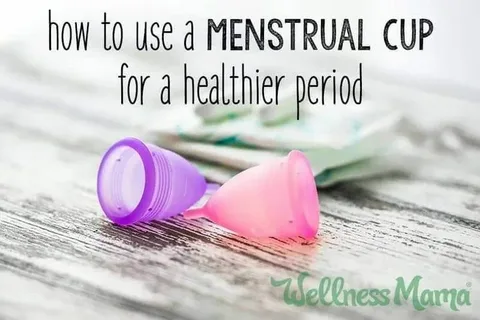As conversations around sustainability, wellness, and personal care continue to evolve, menstrual cups are emerging as a popular alternative to traditional period products. Once considered niche or unconventional, these reusable devices are now seen by many as a practical and health-conscious choice.
What’s driving the shift? For many users, the appeal lies in a combination of health benefits, long-term cost savings, and environmental responsibility—all packed into one small, reusable cup.
A Natural Approach to Menstrual Care
Unlike tampons or pads, which absorb menstrual fluid, a menstrual cup collects it. This difference is more than just functional—it can have meaningful implications for comfort and vaginal health. Because cups do not contain synthetic fibers, bleaches, or added fragrances, they avoid some of the common irritants associated with disposable products.
In addition, menstrual cups help preserve the body’s natural moisture and pH balance. By reducing dryness and potential irritation, they offer a gentler option for managing monthly cycles. Many users report that they feel cleaner, more comfortable, and more at ease during their periods after making the switch.
The Rise of TPE in Menstrual Cup Design
One of the more recent innovations in menstrual cup manufacturing is the use of thermoplastic elastomer (TPE)—a flexible, medical-grade material that’s becoming increasingly popular.
TPE cups are designed to respond to body temperature, gently adjusting to the user’s internal shape and creating a customized, secure fit. This adaptive quality helps enhance comfort and reduce the sensation of pressure or stiffness that some may experience with more rigid materials.
Importantly, TPE is not necessarily softer than silicone, another common material used in menstrual cups. TPE cups come in a variety of firmness levels, giving users more choice based on their anatomy and activity level.
TPE is also a good option for individuals with latex or silicone sensitivities, and the smooth, non-porous surface makes it less likely to retain bacteria linked to Toxic Shock Syndrome (TSS), offering an additional layer of reassurance.
Convenience and Confidence
For many people, one of the biggest benefits of switching to a menstrual cup is the convenience. Most cups can be worn for up to 8 to 12 hours, depending on the user’s flow. That means fewer interruptions throughout the day and fewer supplies to carry.
The reusable design also makes cups a practical option for travel, outdoor activities, and overnight use. And while there may be a short learning curve involved with insertion and removal, most users report that the process becomes second nature after a few cycles.
To make the transition easier, many brands now offer a menstrual cup quiz to help individuals choose the right cup based on personal factors such as age, flow, childbirth history, and pelvic floor strength. These tools have helped demystify the process and make it more accessible for first-time users.
An Eco-Friendly and Budget-Smart Solution
With concerns about environmental sustainability on the rise, menstrual cups are also being embraced as a way to reduce waste. Disposable period products—pads, tampons, and their packaging—generate billions of pounds of waste each year. A single menstrual cup, by contrast, can last for several years with proper care.
Beyond the environmental impact, menstrual cups also offer financial advantages. While the initial cost of a cup is higher than a box of pads or tampons, it quickly pays for itself, often saving hundreds of dollars over time.
A Complementary Option: Period Underwear
Another growing trend in menstrual care is period underwear—washable, absorbent garments designed to replace or supplement traditional products. Many users pair period underwear with menstrual cups for added protection, especially overnight or on heavier days.
This combination provides peace of mind and added comfort, especially for those still adjusting to using a cup or for anyone seeking extra security without adding bulk or waste.
A Small Change with Lasting Benefits
As awareness grows around the materials and methods used in menstrual care, more people are reevaluating their options. The menstrual cup, once seen as an alternative product, is now gaining ground as a mainstream choice—one that aligns with health goals, lifestyle preferences, and environmental values.
With advancements in design and materials like TPE, along with growing accessibility and education, menstrual cups are becoming an easy, effective way to take control of menstrual health—naturally and sustainably.


